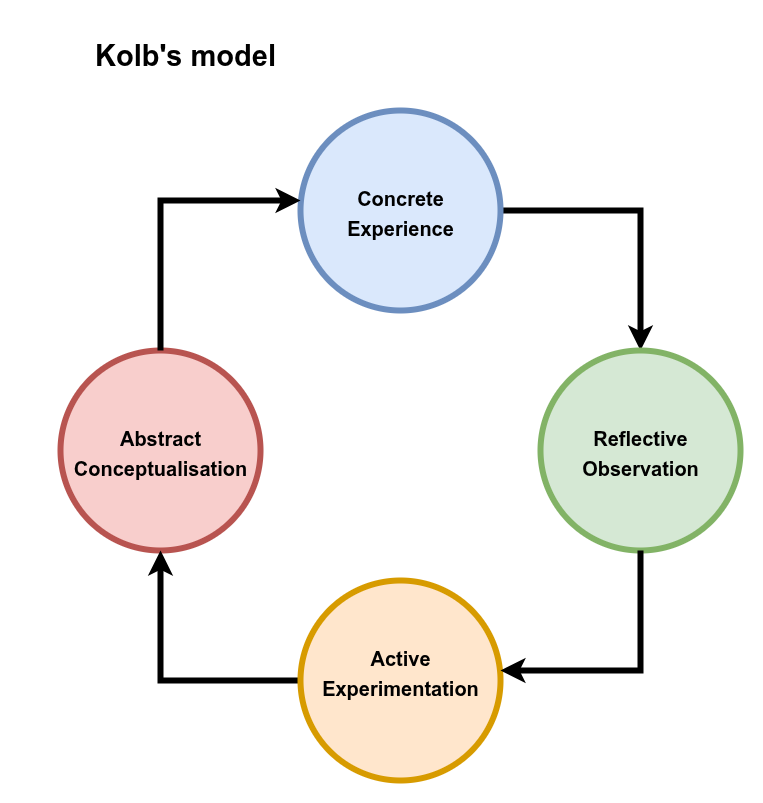Reflection and Kolb's model of reflective thinking
Introduction
Reflection is not a skill that people easily use. This may be because many education systems tend to be focused on 'facts' and stress the importance of 'right' and 'wrong' answers. It may also be that people do not see the relevance of what they may perceive as a 'wishy washy' sort of activity. It may be that people are just not aware of this sort of thinking. Whatever the reason reflective thinking can still be learned and has many benefits for improving our learning and in many other areas.
Reflection is defined as: "consideration of some subject matter, idea, or purpose" (Merriam-Webster’s dictionary of English usage, 1994) or "the process or faculty by which the mind observes and examines its own experiences and emotions" (‘Oxford English Dictionary.’, 2000).
Schön (2017) differentiates between 'Reflection on action' as being after the event where we reflect on our experiences and 'Reflection in action' as being something we do during the event e.g. reflecting on how we are participating in a group or whilst performing a task.
Talking about academic researchers by Fortuin and van Koppen (2016) identify two different types of reflection: 'Type 1 Reflection' is when researchers reflect on their research questions, methods used and how they interpret results as opposed to 'Type 2 Reflection' which involves a critical examination of their how they think about knowledge and assumptions including the role of scientific knowledge and its relationship to other ways of knowing. They also suggest three levels of reflection as being: a general level e.g. science in general; a specific project; and an individual level i.e. one's own position.
In this course you are encouraged to both reflect on your past thinking and experiences and your thinking whilst you are thinking.

Kolb's model of reflection
Kolb's four stage reflective cycle focusing on experiential learning has the following stages:
A person has a concrete experience
They observe and reflect on that experience
They put this learning into practice (active experimentation)
They try to make sense of what happened (abstract conceptualisation)
(Kolb, Rubin and McIntyre, 1971).
A simple way of practising this which might help is to ask yourself three questions:
What happened?
So what?
What next?
Example
An example might be something along these lines:
"One of the things that I wanted to remember today was a list of the states in Australia. I have problems remembering things. The list was 'New South Wales / Queensland / South Australia / Tasmania / Victoria / Western Australia'. I tried for a while to remember these but was not having much success"
"So I thought about ways that I could remember them more easily."
"I created a mnemonic for them. It was 'New Queens Suck Toffees Very Well" and found that I could remember the states really easily."
"I think that the mnemonic creates a mental image which I find easier to remember than an abstract list of names. I will definitely be using this technique in future."
Practice
For the rest of today try to apply Kolb's model to a learning experience that you have, you could also try to apply it to your thinking or actions in more general terms.
Also try to be reflective after you have done something and whilst you are doing something.
You can also apply reflective thinking to this course itself.
You might want to keep a journal of some sort or some other way of recording your thoughts or what you did so that you can reflect on them later.
If you are a member of an on line group of some sort with other learners you might want to share your thoughts with the group and read what their thoughts are.
Try not to skip ahead to the next day, it is important to give yourself time to practice reflecting.
